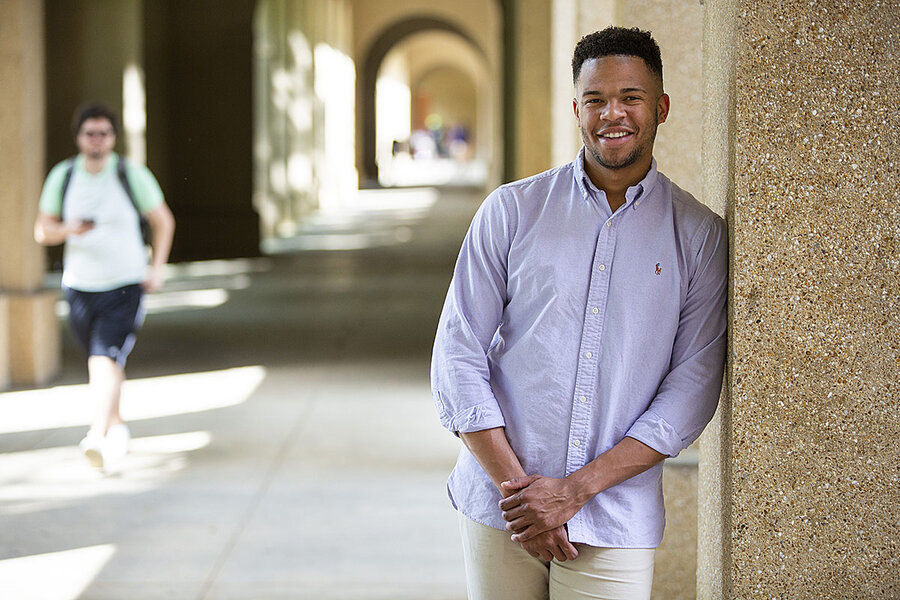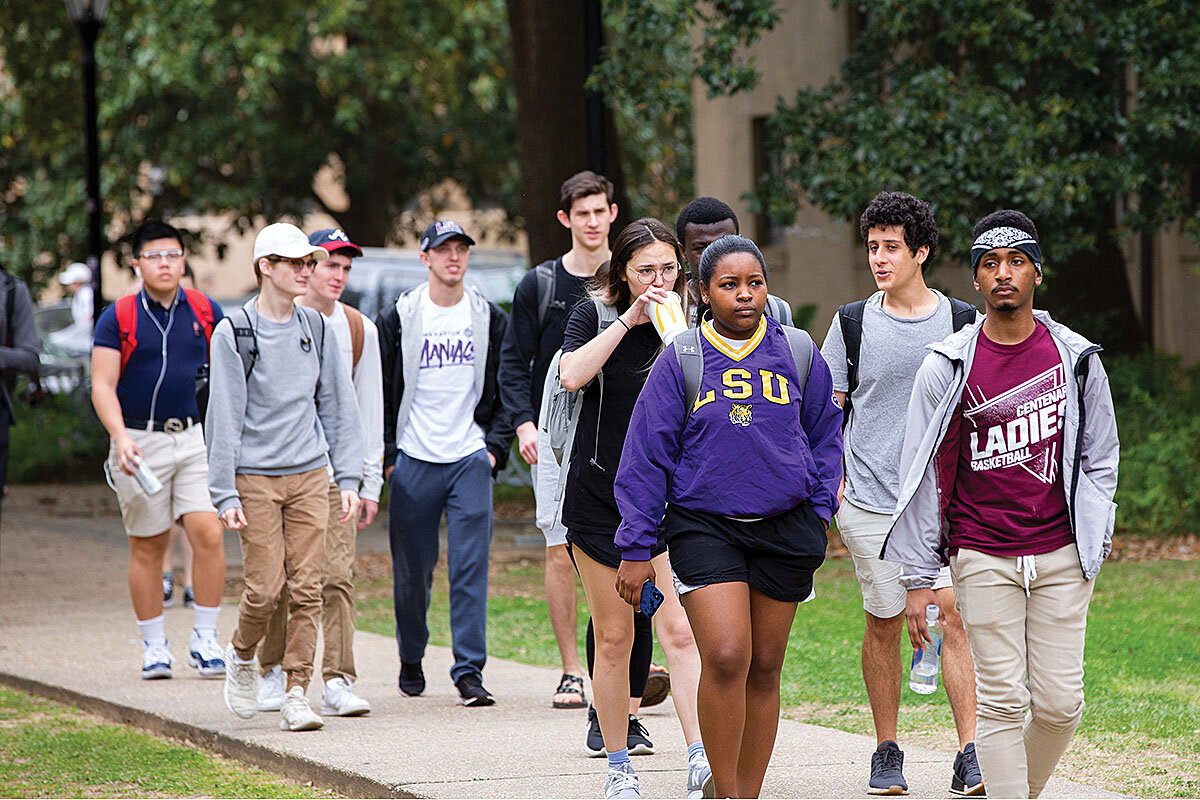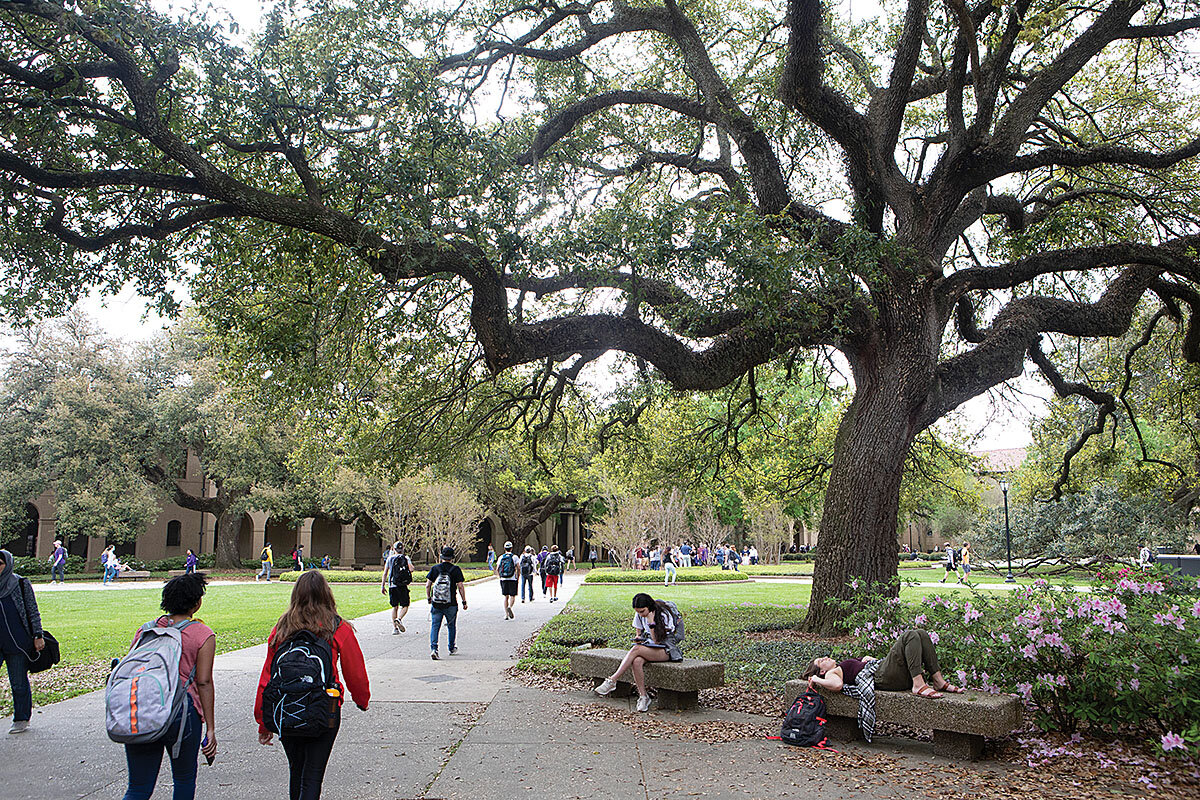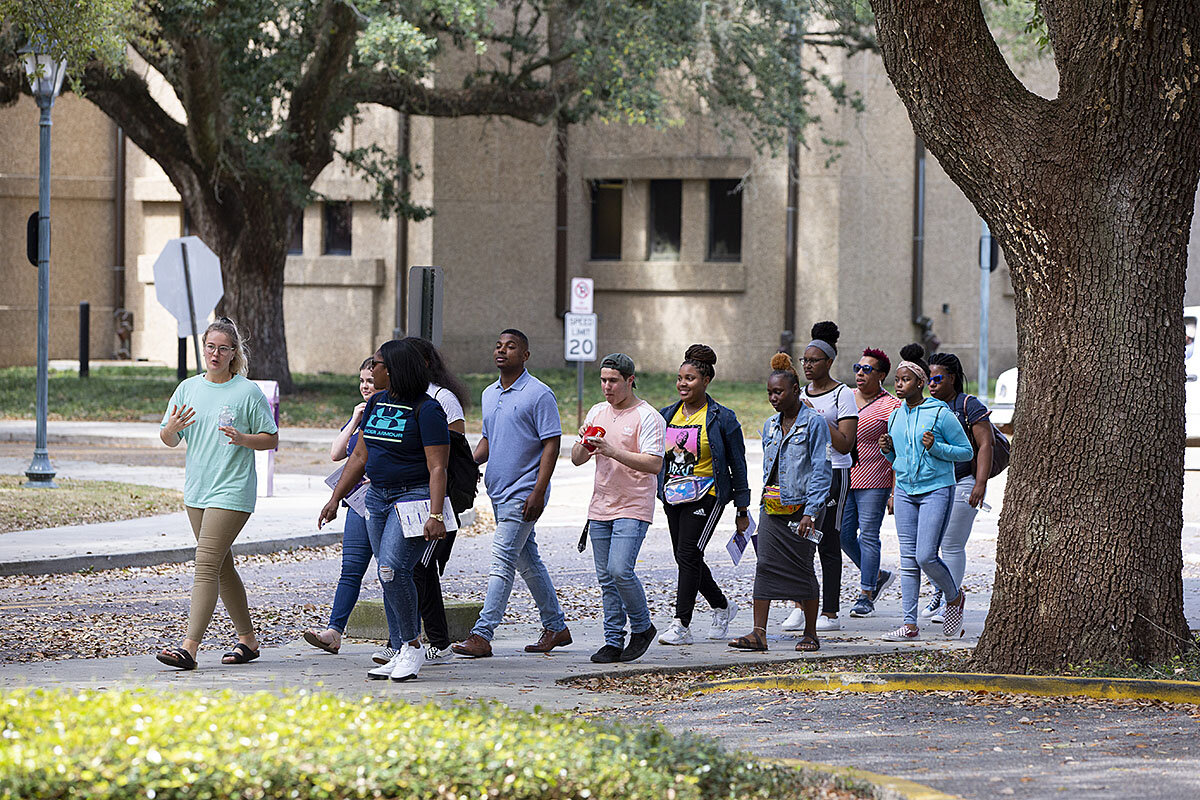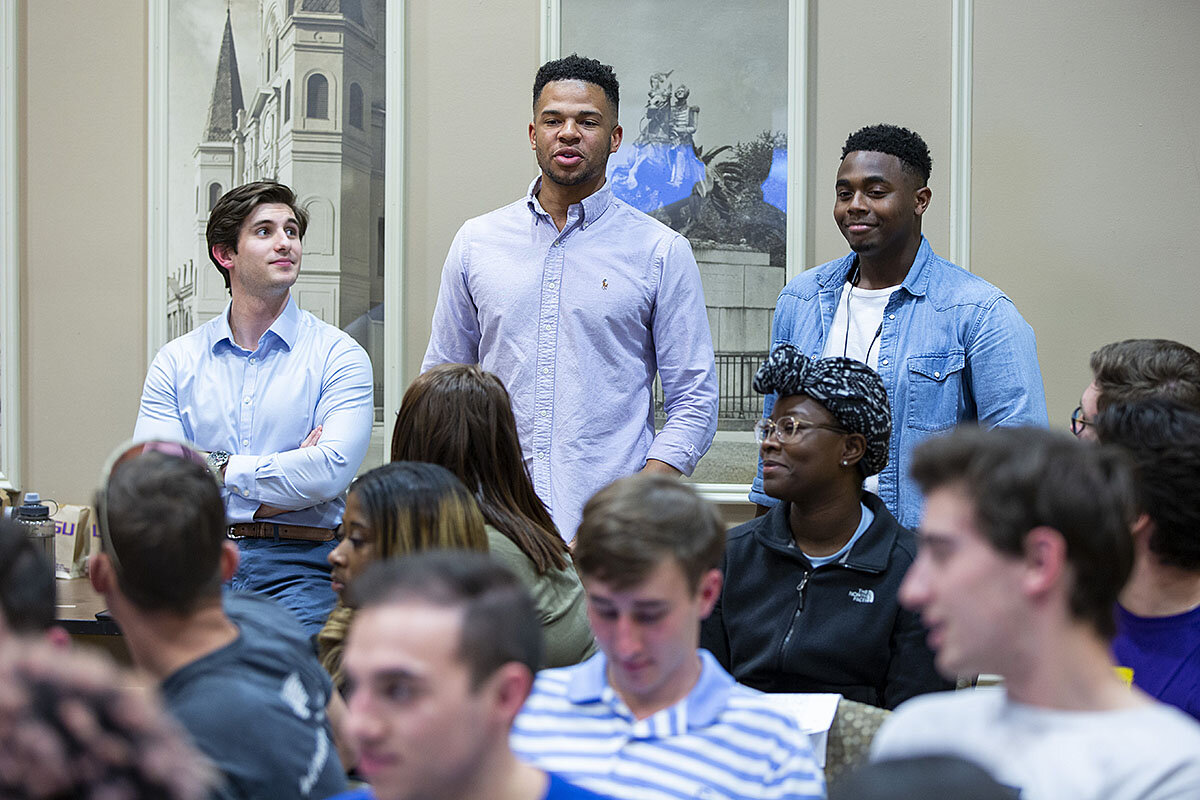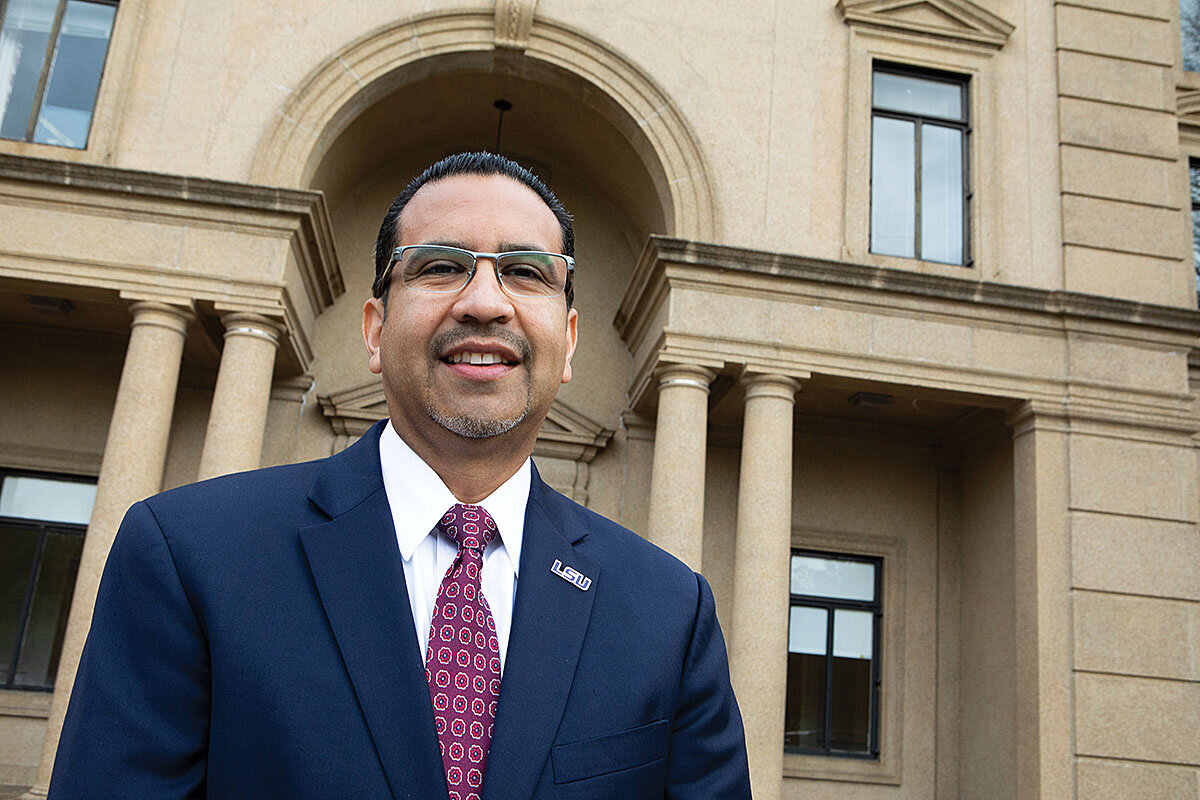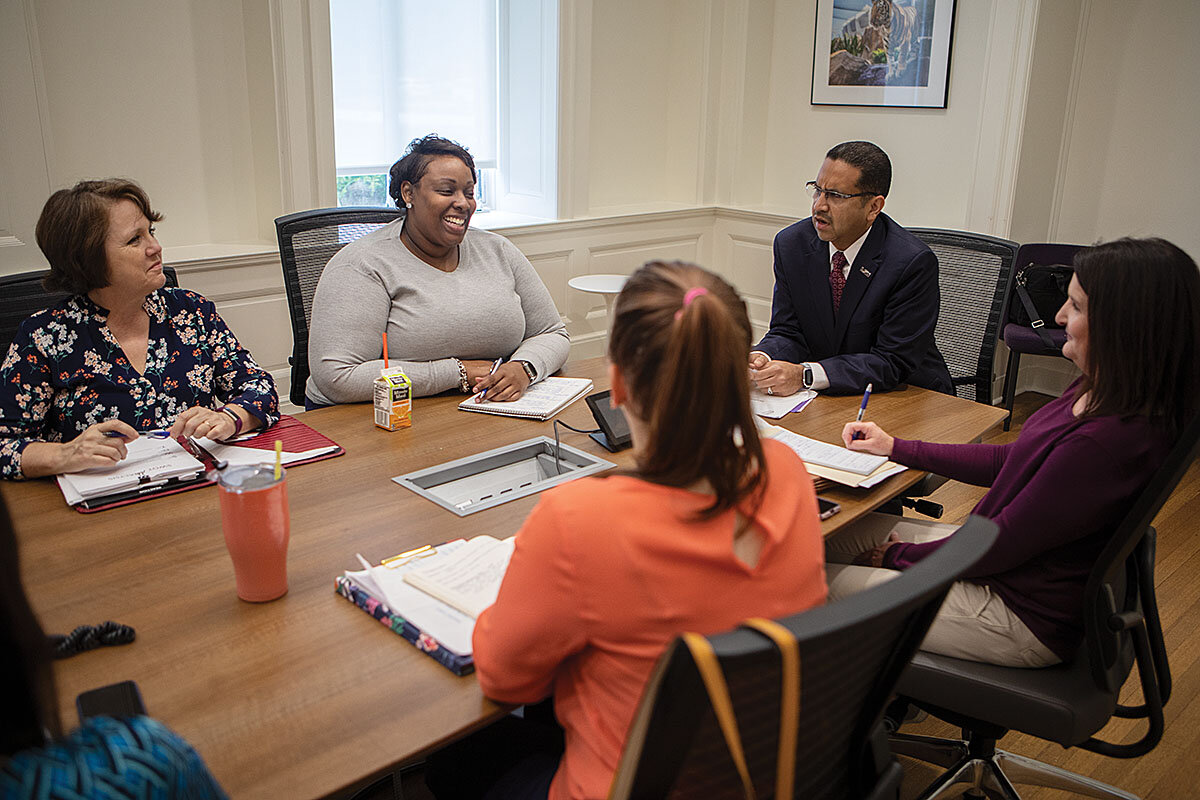For state schools, diversity isn’t just about fairness. It’s also about the bottom line.
Loading...
| Baton Rouge, La.
A few weeks after Stewart Lockett made local headlines for becoming the first black student body president at Louisiana State University in nearly 30 years, the 21-year-old settled into his new office and began looking through the files that previous presidents had left behind.
He found old notes of inspiration and campaign buttons that promised to “Unite LSU” and “Put Students First.” He pulled out a student government flyer from five years earlier. It showed the 100 or so young people who’d served on the body that semester. Mr. Lockett reached for a different flyer, then another. Every year, in every photo, nearly every student was white.
For years, LSU was the state’s whitest public university. But Mr. Lockett could feel things changing. Even as flagship state-funded universities elsewhere have grown less diverse, LSU has made small but important gains.
Last fall, after the university’s admissions team worked to craft a more intentional recruiting plan, officials say they enrolled the most diverse freshman class in LSU’s nearly 160-year history. Though minority students here still report high rates of discrimination, a growing number of African Americans and Latinos are staying at the state’s flagship campus in Baton Rouge for all four years.
In mid-January, as Mr. Lockett returned to the office for his final college semester, he fished out the old campaign flyers and compared them with the photo he now uses as his computer background. His student government is about half white, with a mix of black, Latino, and Asian students rounding out the team.
“I’m not going to lie,” Mr. Lockett says, his eyes squinting as he grins. “It’s pretty cool. It’s been a huge shift, and we’re really proud of it.”
Each state likes to think of its premier university – the flagship institution – as a shining example of their public higher education system. School officials often portray them as beacons of affordability and excellence, boasting the best professors, top-notch research facilities, and the highest graduation rates. These taxpayer-funded institutions also strive to be drivers of societal and economic equality. As such, they are important barometers of progress.
At Louisiana’s flagship, the university is far whiter than the state it serves, according to a Hechinger Report analysis of the most recent national data. In 2016, 44% of Louisiana’s high school graduates were black. But that fall, black students made up just 13% of LSU’s freshman class. The 31-point gap is one of the three widest in the nation, tied with the University of South Carolina for second place, and behind Ole Miss, with a 39-point gap.
Although the numbers are bad, Louisiana is actually improving while some nearby states regress. Flagship universities in Alabama and Missouri, for example, are enrolling fewer African American students and face a widening gap between the percentage of black students graduating high school and the percentage entering state colleges.
LSU President F. King Alexander says these universities are charting their own demise. Children of color make up the majority of public school students under age 18, and their share of the population will only grow, even as the total number of college students is projected to drop by 15% over the next decade. At the same time, state budget cuts mean public institutions must rely more heavily on revenue from tuition and fees than on taxpayer dollars. State data shows LSU’s undergraduate enrollment has declined each of the last three years to 25,235 last fall.
“If we don’t pay attention to demographic trends, many of our institutions are going to be left out in the cold for decades,” Dr. Alexander says. To remain financially viable in the long term, as well as fulfilling its mission of serving all the state’s residents, he knows his school has to enroll a greater number of students who look like Mr. Lockett.
The road to LSU
Long before Mr. Lockettknew where he’d go to college, he knew what he wanted to study.
“I was really good in physics,” he says. “My friends would get annoyed because I would do really well in the class. My teacher specifically made the class hard, and she told my mom, ‘He should definitely look into something in the STEM majors.’ ”
Mr. Lockett researched science and technology fields and decided on bioengineering, a discipline that combines science and math to study living things. LSU was one of only three schools in Louisiana that offered the major.
LSU is, by many standards, the best public school in the state. It has the state’s largest university endowment and the highest graduation rate for both black and white students. Its football, baseball, and basketball teams are perennial national contenders, and its faculty includes internationally renowned researchers.
The university was just an hour and a half away from Mr. Lockett’s home in New Iberia, a midsize Cajun town that is roughly half black and half white. But Mr. Lockett says his guidance counselors never encouraged him to apply to LSU. Instead, he says, they gave him brochures for the University of Louisiana at Lafayette, a nearby institution whose population is a fifth African American, and they told him about Xavier University of Louisiana, a historically black school in New Orleans, “because I was pre-med, and I was black.”
Mr. Lockett knew Xavier was ranked first in the nation for the number of African Americans it sent to medical school, but he didn’t want to be “the typical student.” He wanted to meet people from different backgrounds, pursuing other majors, so he ignored his counselors’ advice and decided to visit LSU and Tulane University in New Orleans.
He admired Tulane’s reputation, but he didn’t feel at home when he toured in 2014. Tulane didn’t seem as connected to the Louisiana community, he says, and the student body appeared overwhelmingly white. The freshman class was only 3% black.
Mr. Lockett had grown up hearing about LSU. His mother attended for a year in the late 1970s before deciding the university wasn’t right for her. She transferred to Southern University, a historically black university in Baton Rouge, where she met Mr. Lockett’s father and earned a degree in marketing. But Mr. Lockett’s older brother had enrolled at LSU in 2010, liked the school, and was close to finishing his bachelor’s in electrical engineering when Mr. Lockett visited in the spring of 2014.
He had never seen anything quite like the school’s 2,000-acre campus, but what impressed him most were the students. Everyone seemed to be smiling. LSU was far whiter than Mr. Lockett’s hometown, but the flagship felt blacker than Tulane, he thought. At LSU, he’d be one of 3,000 black undergraduate students – part of “a community within a community.”
Historic struggle with diversity
Black students spent decades pushing to form that community at LSU. They have been applying for enrollment here since at least 1938, when the Supreme Court ruled in Missouri ex rel. Gaines v. Canada that states that did not provide graduate programs for African Americans must admit black students into white schools. Dozens of young black people tried to enroll in LSU’s law, medical, and undergraduate programs, but administrators successfully blocked their entry, relying on the “separate but equal” doctrine, a precedent set in Plessy v. Ferguson, a Louisiana case. Over time, after African Americans successfully gained entry to flagships elsewhere, LSU administrators relented and, under court order, allowed a handful of black students to enroll.
Before Mr. Lockett, only two African Americans had ever led the student body. The first, Kerry Pourciau, attended LSU with white supremacist David Duke. Ms. Pourciau took office in 1972, two years before the U.S. Department of Justice sued Louisiana, accusing the state of operating separate higher education systems for black and white students, a violation of the 1964 Civil Rights Act.
But four decades later, when Dr. Alexander became president, black students made up less than 11% of LSU’s student body. And flagship universities across the country have struggled to diversify their ranks. Since 2010, more than a third of state flagship universities have posted declines in the percentage of African American freshmen they enrolled. “Universities need to quit worrying about U.S. News and prestige and start worrying about their mission,” Dr. Alexander says. “I’ve got way too many of my colleagues that are chasing things that mean nothing. They end up reducing opportunities that they are supposed to be providing for their state.”
LSU long remained the state’s whitest school, in part because admissions requirements eliminated most black students from consideration. Since 2001, when standardized test requirements were first imposed at the flagship, LSU has rejected any applicant who earned less than a 22 on the ACT. The average score for black students in Louisiana last year was 17.3.
The university is also one of the most expensive in a state where 1 in 3 African Americans live below the federal poverty line. Statewide budget cuts have forced college administrators to find other sources of money. Since the Great Recession, tuition has risen at a higher rate in Louisiana than in any other state. LSU now costs $28,600 a year – $844 more than the annual median income for black families in Louisiana.
A leader’s goal
Almost as soon as Dr. Alexander arrived in 2013, he began pushing the university to do better. He’d worked the previous eight years as president of California State University, Long Beach, an institution where the population was less than 20% white, and he’d grown up hearing stories about how his grandfather helped desegregate Kentucky schools in the 1960s. Dr. Alexander believed diversifying was the right, moral move. He also saw a financial imperative. The state has cut its contribution to LSU in half since the recession. Nationwide, Dr. Alexander says, the only real gains in enrollment were going to come from underrepresented communities.
Early in his tenure, the president worked on a summit addressing black male achievement, joined the 100 Black Men civic organization, and began serving as the faculty liaison to the university’s branch of the NAACP. After only four black students rushed a fraternity or sorority in the fall of 2013, Dr. Alexander urged Greek leaders to “be forward thinking.”
The number of black and Latino students crept up in the years after Dr. Alexander took over. When Mr. Lockett enrolled in 2015, he was in the first undergraduate class to have at least 3,000 black students – a total that made up 12% of the student body.
But the university’s overall enrollment, which has jumped up and down over the last decade, began to decline the next year.
Dr. Alexander said the university could push harder and, in 2017, when he went looking for a new chief enrollment officer for undergraduate admissions, he chose Jose Aviles, a Latino who had been the first in his family to attend college.
Enrollment dropped by more than 700 students from 2016 to 2017, and when Dr. Aviles arrived on campus that fall, he says he found “great anxiety” about the numbers. But LSU’s admissions team had the same problem he’d seen at other institutions. They didn’t know “how to do the work of diversity.”
As part of its desegregation lawsuit, the federal government required LSU to submit proof of its minority-recruiting efforts for 20 years. University officials submitted as evidence ads they’d placed in newspapers and on radio stations. They hired “other-race” liaisons and sent generic letters to black students who’d performed well on the ACT.
But Dr. Aviles had learned in five years of diversifying campuses in New York and Delaware that brochures are not enough.
“You can’t just set up a table,” he says. “It’s about making relationships, being visible in some of these rural communities or in New Orleans, communities that are really going to need a significant presence from our end in order to provide students that clear understanding of not just that we want them but that there is a picture of success for them here.”
In the past, Dr. Aviles says, LSU’s admissions team had skipped schools with low performance scores. Recruiters rarely made trips to the state’s far reaches, to schools where few, if any, students might be considering the state flagship. “We have to roll up our sleeves and get into these schools,” Dr. Aviles says. Traveling to distant parts of the state might be more expensive, but he argues it will cost the state more if young people there don’t earn degrees and can’t join the middle-class workforce.
Last year, as LSU’s admissions team worked to craft a more intentional recruiting plan, the university decided to try something that many other flagships already do. Instead of eliminating students who scored too low on the ACT, admissions officers evaluated students using what’s known as “holistic admissions.” In that type of review, university staff consider recommendations, essays, and other information to decide whether a student might do well at LSU, even if the student performed poorly on a standardized test.
“We deepened what we understand as merit, who deserves the opportunity to participate,” Dr. Aviles says. “If you’re just selecting students on board scores, those things alone are not enough to determine whether a student can be successful on your campus or not. Resilience or grit – students who are going to get up every day no matter how many times they are knocked down – you can look for that.”
Some schools, including the University of Florida, haven’t made any meaningful diversity gains since adopting holistic reviews, and some researchers have found the practice is more likely to benefit poor white students than Latinos or African Americans.
But Dr. Aviles and Dr. Alexander say the new policy, coupled with expanded scholarship offerings and a push to recruit in neglected communities, is paying off at their school. Among the 5,809 freshmen LSU enrolled last fall, 433 were admitted by exception. A third of those were from low-income families, and more than half came from rural districts. The number of black students in the freshman class jumped from 587 in 2017 to 889 this fall, a 51% increase. The number of Latinos rose, too, from 313 to 421, a 35% gain.
Getting more black and Latino students on campus was important progress,
Dr. Aviles says, but if university officials want to retain minority students, they have to show that opportunities exist here for Latinos and African Americans. Students need to believe they can rush any fraternity, run for homecoming queen, or serve on the student government.
‘He was the best candidate’
When older students began asking Mr. Lockett to run for student body president, many did so, he says, because they thought his win “would be great for the campus.”
Mr. Lockett “wasn’t just the best black candidate,” says Drake Boudreaux, a 2017 graduate who helped recruit him. “He was the best candidate overall in his class. He’s really charismatic and super passionate. You can tell when he’s talking to people that he cares about them.”
But Mr. Boudreaux, who is white, and others recognized the potential impact of Mr. Lockett’s win. “He had this diversity factor that I think a lot of people at the university were really yearning for,” Mr. Boudreaux says. “It made him even more of an attractive candidate. He brought a whole slew of unique experiences that made him refreshing.”
Mr. Lockett came from a small town and wasn’t “obnoxiously wealthy,” Mr. Boudreaux says. Most past presidents have been in fraternities or sororities; Mr. Lockett isn’t. Even his bioengineering major made him diverse: Many students come to school politics from the humanities departments.
Still, Mr. Lockett knows what his victory meant in a state that once fought to keep students like him out of LSU. He understands why black parents pull him aside after panels or school tours to ask for “the real story.” They want their children to feel safe. They want to know if LSU is a different university than the one that existed when they were young.
Mr. Lockett tells them “straight up.” He has loved his time at LSU, but he knows other students haven’t had the same experience. In a campus survey conducted during his sophomore year, a quarter of the black respondents said they did not feel “part of the family” at the university, and another third said they didn’t feel part of the community. The majority of black employees and students said they had sometimes felt uncomfortable on campus because of comments about their race. Nearly half of the Latino students and employees reported discomfort due to race-related comments.
One Friday early this semester, Mr. Lockett steps outside his office to talk to the dozen black and Latino students planning multicultural events and new legislation aimed at better serving the university’s minorities.
Two of the students – Lauren Roach and Priscilla Velazquez – say they joined student government in part because of Mr. Lockett’s election. The women now lead the organization’s diversity committee, but both say they’d initially felt alone at LSU.
Ms. Roach, a junior studying digital advertising, grew up in Prince George’s County in Maryland – “where African Americans were always in the majority,” she says. She’d fallen in love with LSU because of its award-winning gymnastics program and its Manship School of Mass Communication, but she’d been surprised to find so few black students when she arrived.
“I didn’t feel like I belonged here,” she says.
Ms. Velazquez, a junior kinesiology major from the outskirts of Dallas, says she also struggled to adjust after leaving a majority Latino high school for a predominantly white university.
“When I came here my freshman year, I didn’t have a community,” she says. “I’m Mexican, and until this past summer, I didn’t have a professor who looked like me. I felt like you were either white or you were black, there was no in between.”
Mr. Lockett will graduate in May, but he hopes to use his final months on campus working so future students don’t feel what Ms. Roach and Ms. Velazquez did their freshman years.
As lunch nears, Mr. Lockett goes to meet with a reporter from the student paper. The interview turns toward his push for a new building to replace the 60-year-old Middleton Library, which has water damage from a leak.
“I’m very serious about academics,” Mr. Lockett says. “So it’s a little personal for me.”
He doesn’t bring it up during the interview, but the library is named after Troy Middleton, a former university president who once bragged that LSU had done more to promote segregation than any other Louisiana institution. In a folder labeled “Negro problem” are dozens of letters Middleton sent, promising community members he would keep black students out. “I do not want Negro students at LSU,” Middleton wrote to a Shreveport admiral in 1956.
Eventually, Mr. Lockett tells the student reporter, he hopes the library will be demolished and replaced with something nicer, a building with collaborative space, where everyone feels welcome.
This story about diversity on college campuses was produced by The Hechinger Report, a nonprofit, independent news organization focused on inequality and innovation in education. Meredith Kolodner contributed to this report.




